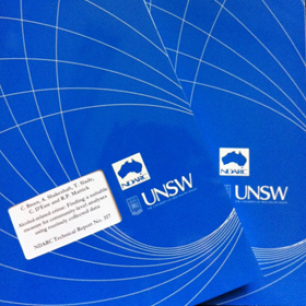NDARC Technical Report No. 82 (2000)
EXECUTIVE SUMMARY
The 1999 IDRS detected a number of drug trends during the past 6-12 months from analyses of the key informant survey and other indicators.
Heroin: The major trends in heroin were an increase in use, accompanied by high purity and ready availability. In addition there was a reported increase in younger users, Asian and Aboriginal heroin users and smoking heroin. There was a reported increase in opiate-related overdoses and general health-related problems.
Amphetamine: Amphetamine prices were obtained for 1998/99 however information on availability was unknown. Purity was reported to be low however this data is considered unreliable. Reports from key informants and surveys suggested an increase in amphetamine use over the past few years.
Cocaine: The price of cocaine was reported to be $200 per gram. Information on availability was not known. The purity was estimated as medium. Information on cocaine use from surveys and key informants suggested an increase in use. Key informants reported that cocaine was not a problem in the ACT.
Cannabis: Cannabis was the second most widely reported illicit drug by key informants. Its potency was high and it was considered easy to obtain. Most key informants indicated that the price of cannabis was stable. The major trends reported were an increase in use especially among younger people and a reported increase in mental health problems.
Other drugs: The main trend noted with regard to other drug use was that the use of benzodiazepines remained high, although key informants reported a decrease in Rohypnol use since it was placed on the schedule 8 list of substances. It was reported that younger women are now attending treatment for benzodiazepine use and making an increase in requests for treatment in general. Prevalence of anabolic steroid use in the ACT is low compared to other illicit drugs; age of first use of anabolic steroids increased slightly. Ecstasy use appears to be increasing particularly among younger people and is more commonly used in combination with other drugs.
Drug related issues: Trends in drug-related issues included more health-related problems, increase in opiaterelated overdoses, mental health problems in cannabis users and general decline of health status among heroin users. There was a reported decrease in the dispensing of injecting equipment from Needle & Syringe Exchange Programs which is in contrast to the reported increase by key informants of heroin use over the last 12 months. The key informants also reported more police activity recently and more violent crime being committed by heroin users.
Research implications: The findings of the 1999 IDRS suggest the following areas for further investigation:
- a continuation of research into factors influencing the current popularity of heroin and its availability and interventions to reduce the harms associated with heroin use such as overdose;
- an examination of the apparent increase in the use of heroin among Aboriginal and Asian people in the ACT, in particular examining differences in use and appropriate access to treatment services;
- an examination of factors influencing transitions to injecting heroin (eg. smoking heroin among Asian people);
- monitoring patterns of amphetamine and cocaine use in the ACT; and
- extension of the IDRS in the ACT to include a survey of injecting drug users.


